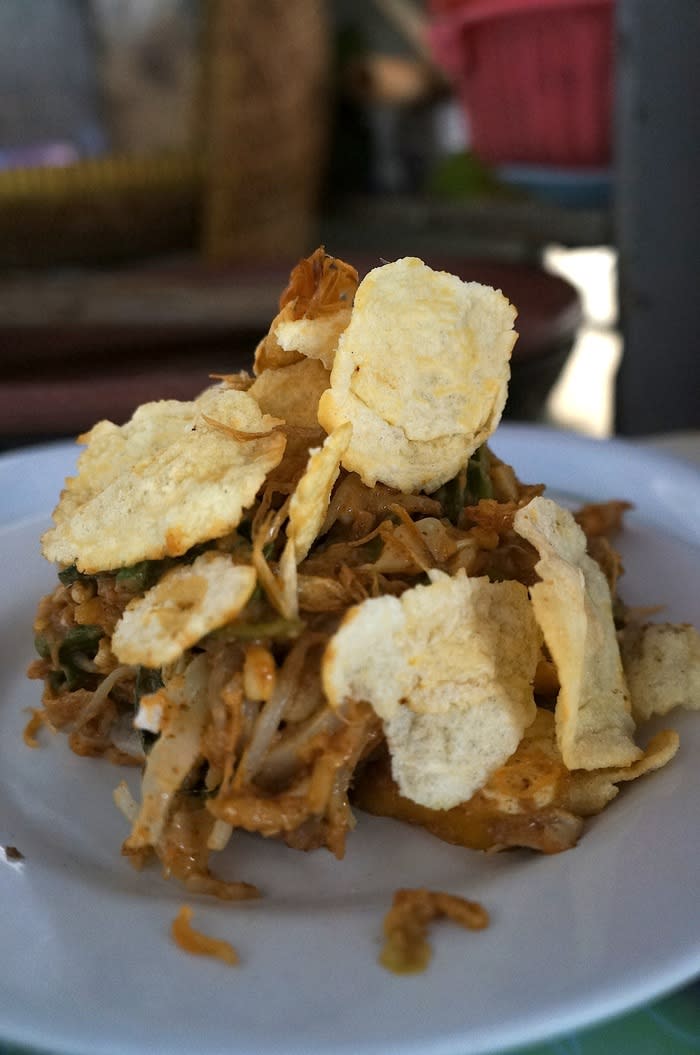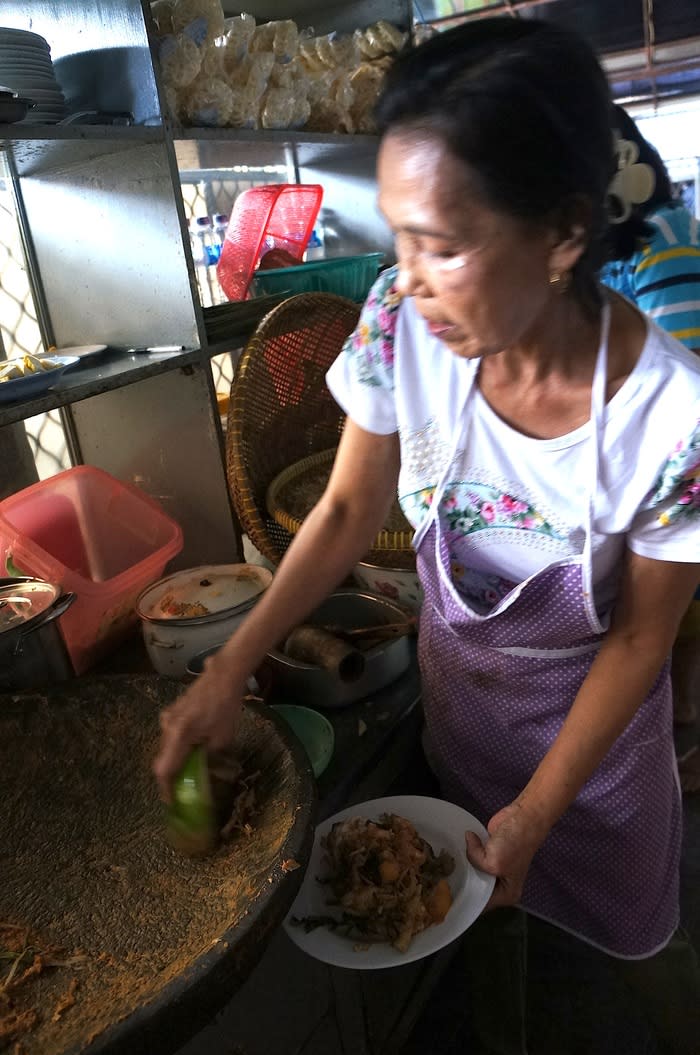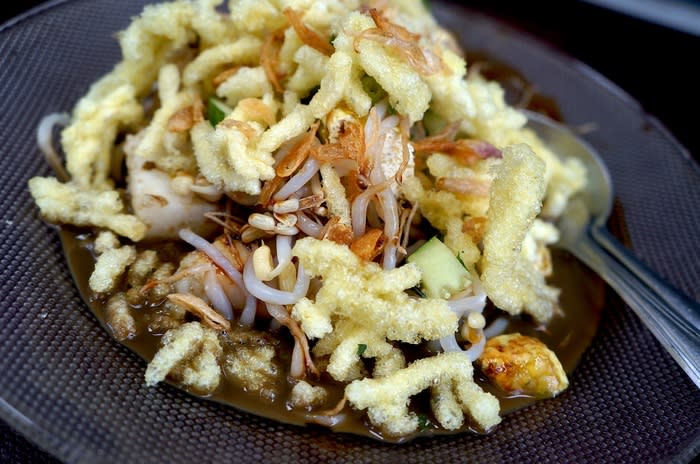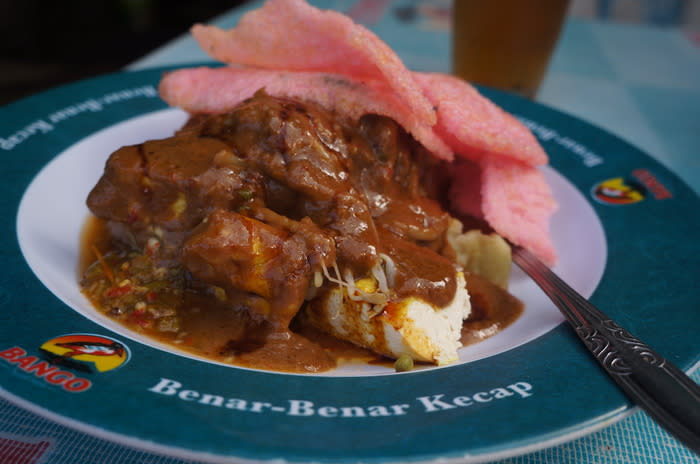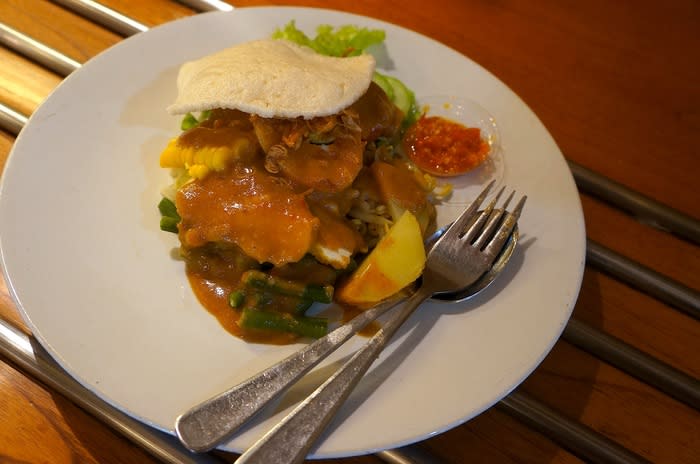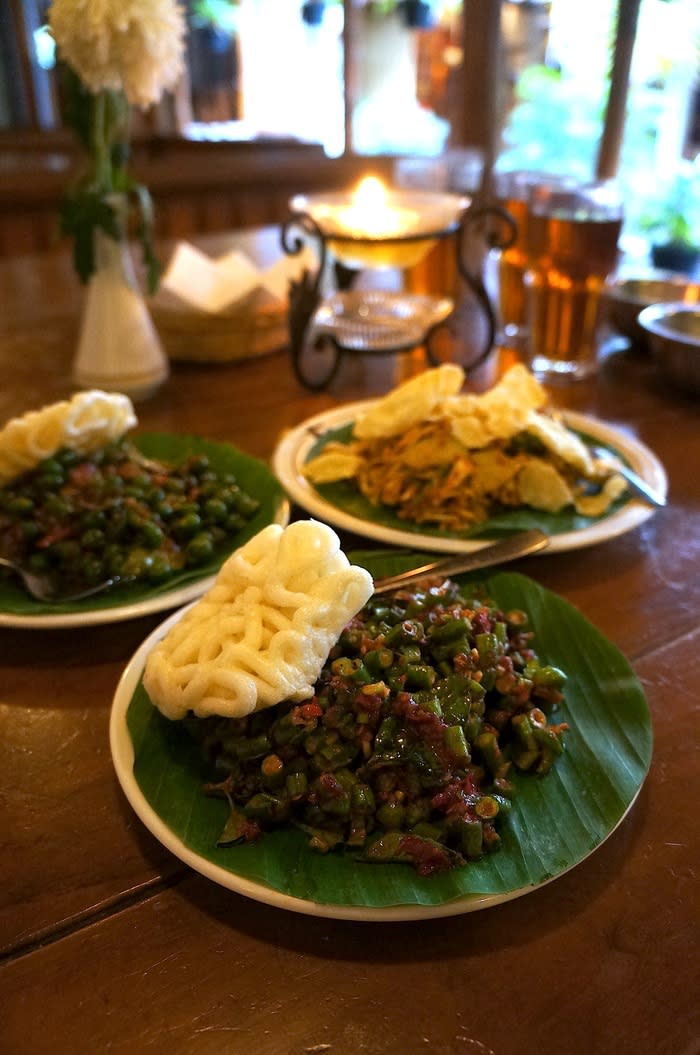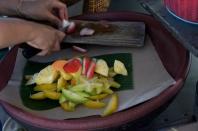The 4 best vegetarian dishes in Bandung
Vegetarian tourists can find Indonesian dishes intimidating at times because many of them contain meat or other animal-derived products.
But things can get easier for herbivores who know what to look for and how to explain to Indonesians that they avoid food with faces. As a matter of fact, Indonesia is home to a number of dishes, such as tempeh and gado-gado, that are famous among vegetarians and vegans worldwide.
Note For Vegetarians:
When ordering food with crackers, ask if the crackers are made with shrimp or any other animal product. The same goes for sambal (condiment), which at times uses terasi (shrimp paste)
Lotek
Lotek is a dish of freshwater spinach, young jack fruit, cabbage, bean sprouts and long beans, mixed with peanut sauce and fried tofu. It can be eaten with or without lontong (rice cakes).
Lotek Paranti on Jl Cilentah No. 4 has been serving this delicacy since 1953. The establishment grew from a humble house to a much bigger and cleaner place over time. Currently, the establishment is run by Ibu Rosihani, the daughter-in-law of the woman who previously managed this legendary eatery.
Lotek Paranti’s sauce is a winner, especially because it contains mashed, savoury crackers, which add an interesting texture and taste.
"We do not use MSG, unlike many places. All our ingredients are natural and homemade," Rosihani said.
Despite her slender figure, she masters the large mortar and pestle — the same one the eatery has been using since 1953 — to make the sauce with ease.
"This is my exercise everyday," she said, laughing, adding that to stay healthy she only eats fresh food she cooks herself.
Aside from lotek, the eatery serves rujak ulek, which is fresh sliced fruit with a caramelized palm sugar sauce. After being chilled in the refrigerator, it makes a very refreshing snack on a hot day.
Both lotek and rujak ulek in generous portions are priced at Rp 18,000 (US$ 1.85)
Kupat Tahu
Kupat tahu is ketupat, or rice cakes, fried tofu and vegetables —usually bean sprouts — with peanut sauce, petis (shrimp paste) soup or vegetable soup.
Two recommended sellers of this dish are Kupat Tahu Petis and Sayur Pak Haji Ali, also known as Kupat Tahu Putri and Kupat Tahu Gempol.
Kupat Tahu Putri is located on Jl Halimun, near the end of Jl Burangrang.
"Our grandpa, Haji Ali, first sold this at Jl Putri, which is nearby, hence the popular name Kupat Tahu Putri. He used the cart and our signature is the petis sauce instead of the regular peanut sauce for kupat tahu," Dian, who currently runs the stall, said.
He added that they have two types of soup for their kupat tahu: the one with shrimp paste soup, and the other with a vegetable and coconut milk broth.
"But sometimes we mix the soup especially if the customer does not want the strong flavor, or the smell, of petis," Dian said.
Open daily from 7 a.m. until around 4 p.m., their kupat tahu costs Rp 12,000 per portion.
Kupat Tahu Gempol on Jl Gempol serves kupat tahu according to the original recipe using peanut sauce. The eatery has quite a legendary status and, despite its humble appearance, its visitors include the well at heel. Ibu Yayah began this Kupat Tahu in 1965, she now sells her kupat tahu with one of her daughters.
Their signature peanut sauce takes long time to prepare and cook, she said. She usually starts making the sauce for the next day in the late afternoon and the process lasts until night time.
Come here for breakfast as this stall opens daily from 6 a.m. to 11 a.m., but during the weekends Ibu Yayah often closes early because she sells out. A portion is priced at Rp 12,000.
Gado-Gado
Gado-gado is not exclusively from West Java and it is easy to find in many part of Java. Bandung has many famed Gado-gado sellers but the best one is likely Cafe Bali on Jl. Riau (R E Martadinata) for Rp 20,000 a portion.
Although considered quite pricey among competitors and the portion is quite small, the lovely interior and refreshing atmosphere of Cafe Bali makes up for the price.
Gado-gado is another vegetable dish with peanut sauce, but the sauce tastes very different than the used on lotek or kupat tahu. The vegetables, usually bean sprouts, long beans, potato and cabbage, are a mix of fresh and cooked. Most sellers add fried tofu and boiled eggs along with crackers and emping, which are chips made from melinjo (gnetum gnemon).
Karedok
The main different between lotek and karedok is whether the vegetables are cooked or not, and, unlike lotek, karedok is usually eaten as a side dish.
"The original recipe actually uses oncom , but nowadays people seldom use it in karedok," Rosihani from Lotek Paranti said.
Oncom is a fermented food made by using by-products of tofu.
Both karedok and lotek are very common food in Bandung and are usually served in the local’s kitchens as well as in various stalls throughout the city. The kemangi (basil leaf) gives it an appetizing aroma, while the fresh long beans give the dish its crunch.
Sindang Reret on Jl Surapati No. 53 serves especially good Karedok at for Rp 13,500 for a small plate.
Other all-vegetable Sundanese dishes served at Sindang Reret are pencok kacang (Rp 12,000), which is fresh sliced long beans glazed in a fresh sour and spicy sambal condiment, and karedok leunca (Rp 12,000), which is fresh leunca glazed with a fresh sour and spicy sambal condiment.
Read also: A mini guide to Bandung’s culinary perks


